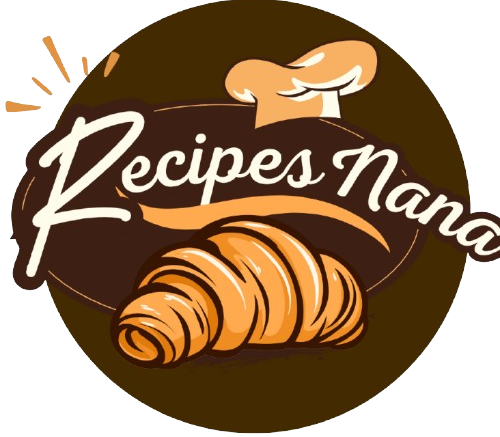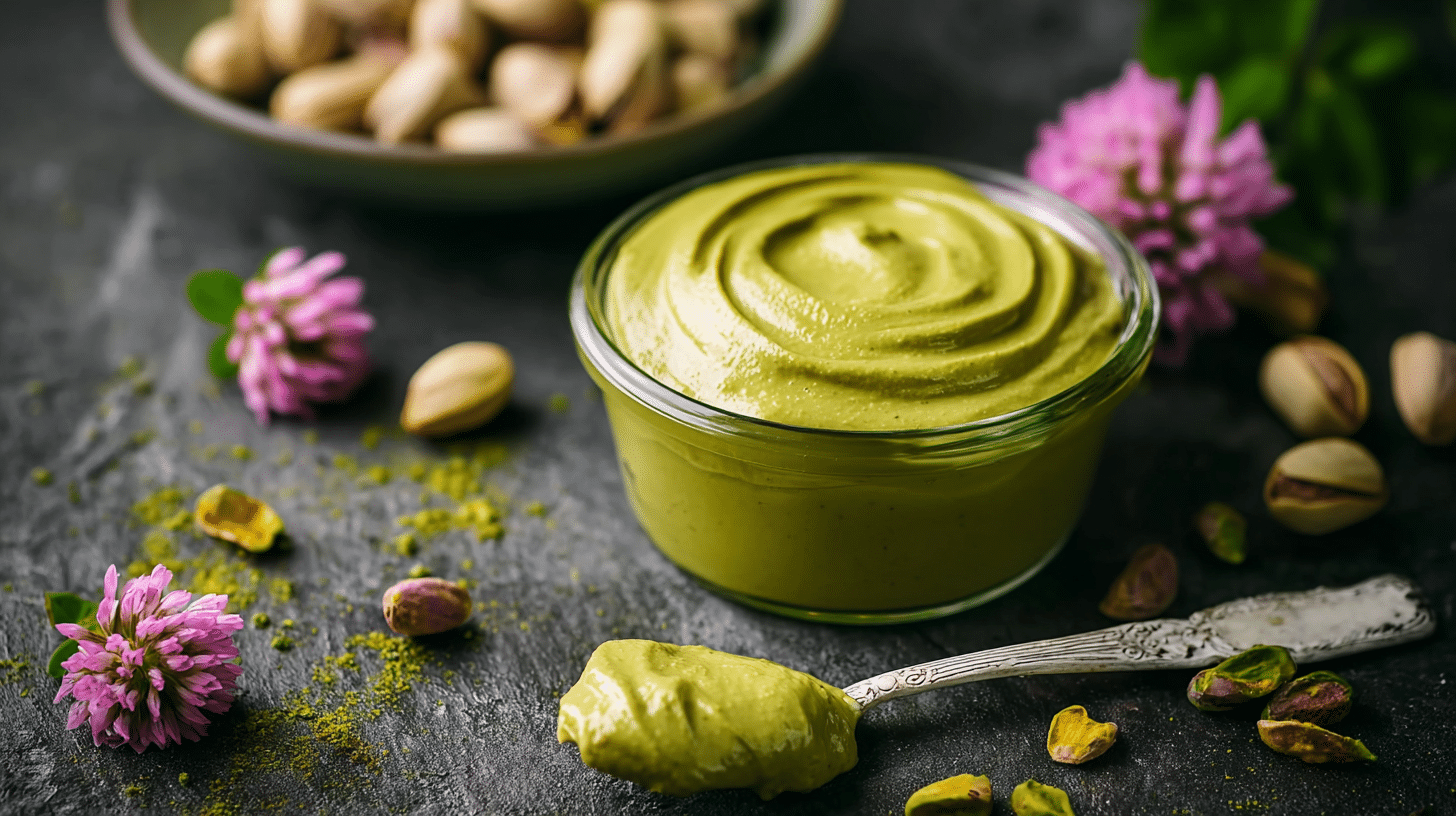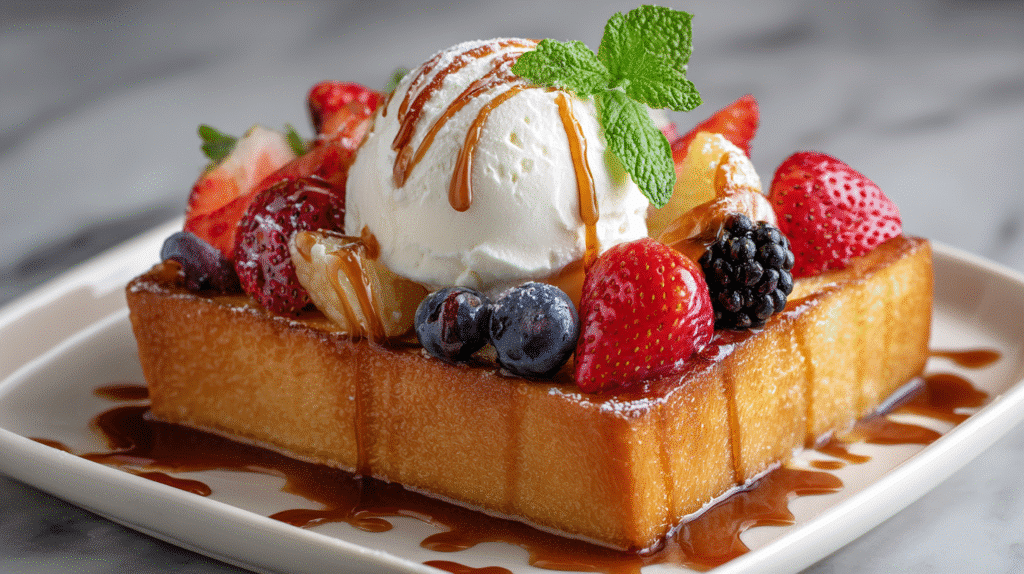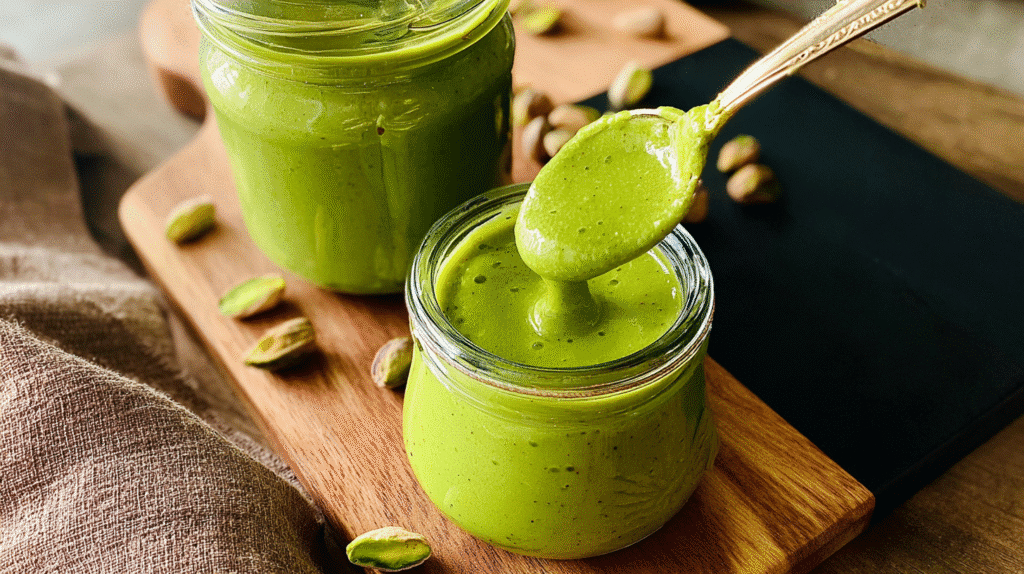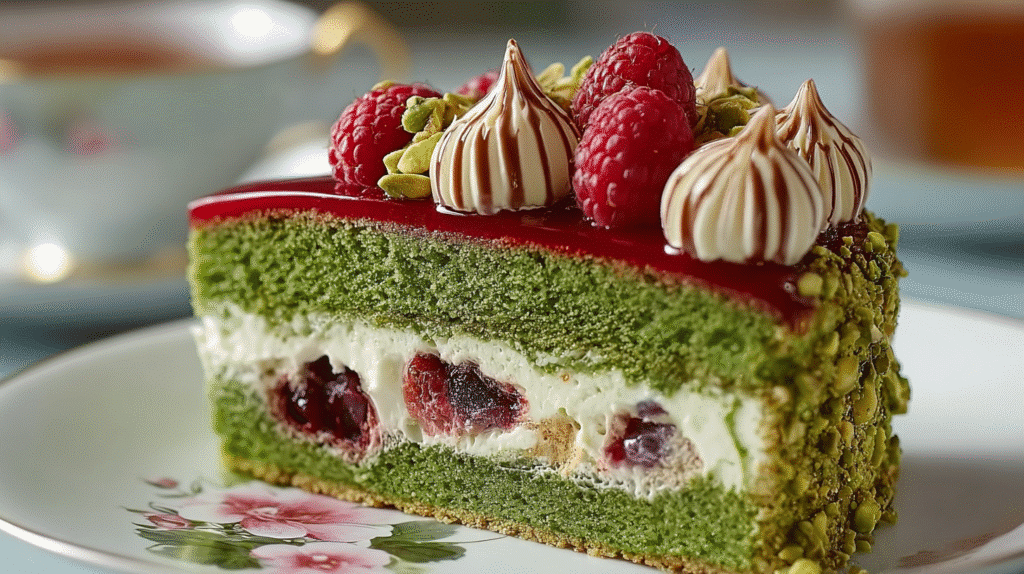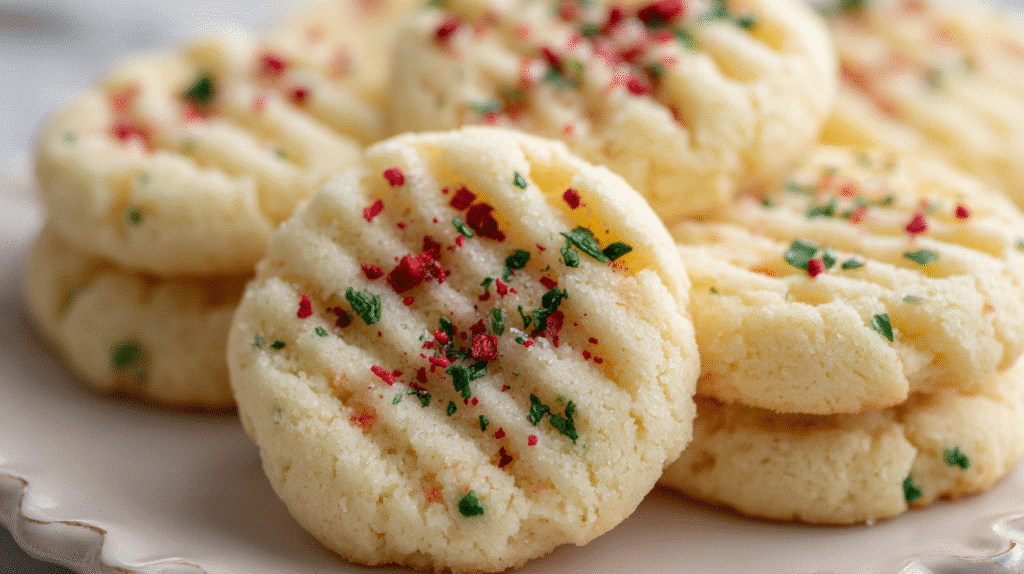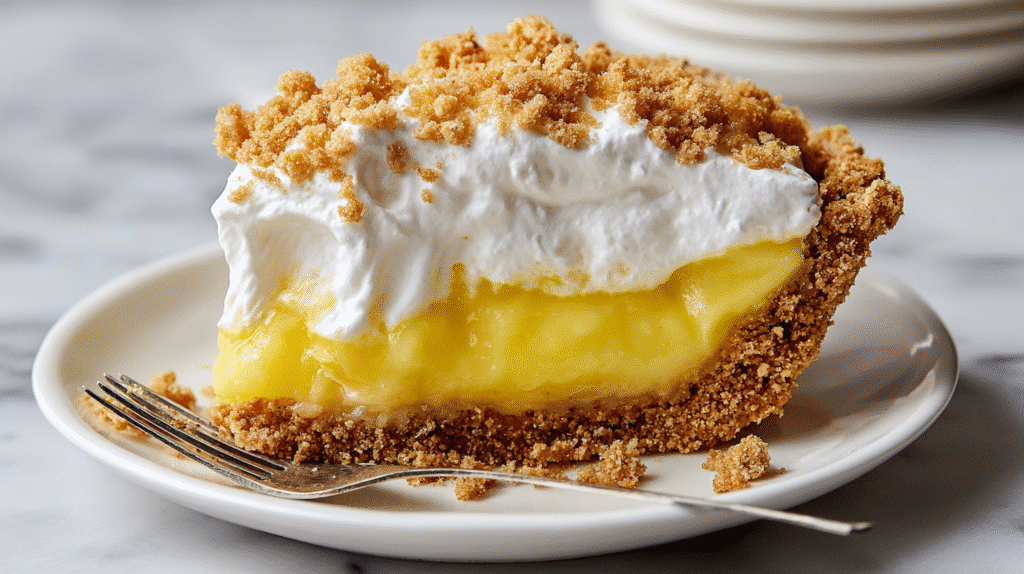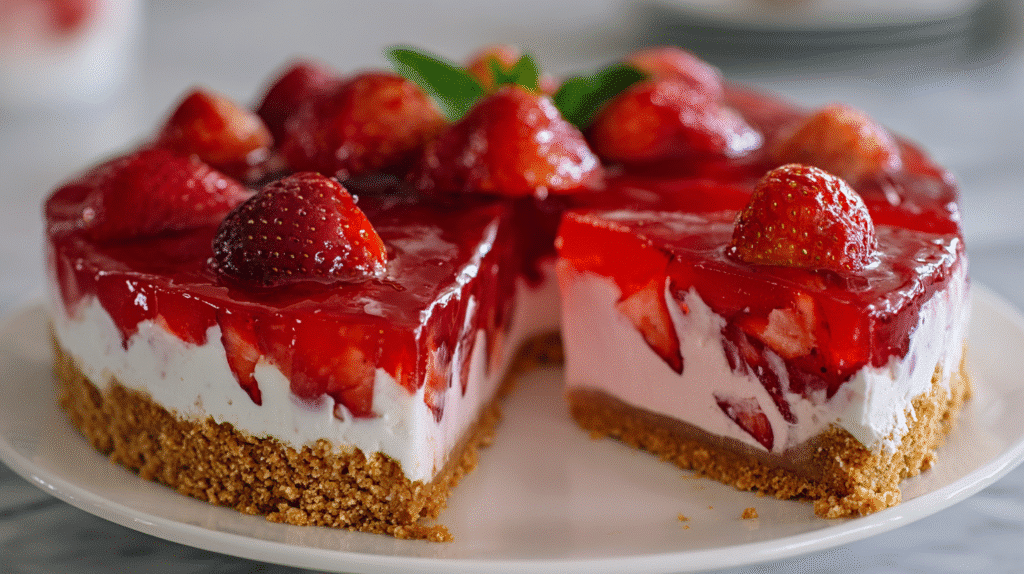The Ultimate Guide to Pistachio Paste: From Homemade Magic to Gourmet Delight
Ever dipped your spoon into a jar of pistachio paste and wondered how something so simple could taste so luxurious? Well, you’re not alone. This vibrant green spread has gone from a hidden gem in pastry kitchens to a trendy staple on dessert menus—just like the viral Dubai Chocolate Strawberries Cup with silky pistachio cream—and all over recipe videos on social media. Whether you’re craving nutty macarons, dreaming of a silky-smooth pistachio cream filling, or just curious how it’s made, this guide has you covered.
In this comprehensive article, we’ll dive deep into everything from the origins and nutritional perks of pistachio paste to how you can make it yourself at home. We’ll also explore its incredible versatility—both in sweet treats and savory dishes—and give you handy storage tips, FAQs, and expert advice to help you choose the best kind for your next kitchen adventure.
Part 1: Introduction & Basics
## What Is Pistachio Paste?
So, what exactly is pistachio paste? Think of it as the green gold of the nut world. It’s a smooth, rich blend of finely ground pistachios—sometimes with a touch of sugar or oil, depending on whether it’s used for baking or savory cooking. The texture? Somewhere between a nut butter and a soft spread. The flavor? Earthy, naturally sweet, and deeply nutty.
Unlike pistachio butter, which usually contains sweeteners and oils for a spreadable texture, pistachio paste is often made with 100 % pistachios, especially in gourmet or artisanal varieties. Its striking green color comes from the nuts themselves, but some commercial versions cheat a bit with coloring agents (yep, that’s why it sometimes looks neon).
Used widely in Middle Eastern, Italian, and French cuisines, pistachio paste is the secret behind many famous confections like pistachio gelato, Parisian macarons, and Sicilian cannoli fillings.
## What Makes Pistachio Paste So Special?
Here’s the thing: pistachio paste isn’t just pretty to look at—it’s packed with good stuff too.
First off, it’s a nutrient powerhouse. Rich in healthy fats, protein, fiber, and antioxidants, pistachios have earned their superfood status. When turned into a paste, they retain much of this nutritional value—especially when the paste is made without additives. That means it’s not only delicious but also a wholesome ingredient (as long as you don’t go overboard, of course!).
On top of that, the taste is truly one of a kind. Compared to almond paste or hazelnut spread, pistachio has a more intense, earthy profile with a subtle sweetness that works wonders in both sweet and savory dishes.
Part 2: Production Process
## Ingredients Overview
Making pistachio paste might sound fancy, but the ingredient list is refreshingly simple. In fact, at its most authentic, you only need one thing: pistachios. Yep, that’s it.
However, depending on your taste preferences and intended use—say for pastry cream vs savory spread—you might choose to add:
-
A drizzle of neutral oil (like grapeseed or sunflower) for creaminess
-
A spoonful of powdered sugar for a dessert version
-
A pinch of salt to enhance depth
-
A dash of almond or vanilla extract to boost flavor (optional)
When buying pistachios, go for the raw, unsalted kind, preferably shelled and skinless. The greener the pistachio, the more vibrant your paste will be. Persian and Sicilian varieties are known for their bright color and bold taste.
## Step‑by‑Step Homemade Preparation
Let’s face it, making pistachio paste at home isn’t just doable—it’s fun. Plus, it gives you full control over ingredients and texture.
1. Blanch & Peel
First up, blanching. This step helps remove the brownish skins and brings out that signature green color.
Here’s how:
-
Boil water, drop pistachios in for 1 minute.
-
Drain and toss into an ice bath.
-
Rub gently with a towel or fingers to peel off skins.
Yes, it’s a bit tedious—but totally worth it for a brighter paste.
2. Dry the Pistachios
Before blending, make sure the nuts are completely dry. Air-dry them or toss them in a 200 °F (95 °C) oven for 5–10 minutes. Moisture is the enemy of smooth paste!
3. Grind and Blend
Using a high-powered blender or food processor, pulse the pistachios until crumbly. Then keep blending until the oils release and a paste forms. This can take 5–10 minutes, depending on your machine and nut freshness.
Pro tip: If your machine struggles, add a teaspoon of oil at a time to help it along.
4. Adjust the Texture
Want a thick paste for pastries? Leave it dense. Prefer a smoother, more spreadable version? Add a bit more oil or water. The consistency is totally up to you.
Part 3: Culinary Uses
Estimated Word Count: 450 words
Let’s be honest—pistachio paste isn’t just a kitchen ingredient, it’s a culinary chameleon. From show-stopping desserts to surprising savory dishes, this nutty green gold sneaks into recipes and instantly elevates them. Whether you’re a seasoned pastry chef or just playing around in your home kitchen, here’s how to put it to mouthwatering use.
## Sweet Applications
When people think of pistachio paste, desserts are usually the first thing that come to mind. And for good reason—its creamy texture and rich flavor make it a pastry superstar.
-
Pistachio Macarons
If you’ve ever tasted those delicate French macarons with pale green filling, chances are you’ve had pistachio paste in action. It brings depth and earthiness that plain buttercream just can’t match. -
Pistachio Gelato and Ice Cream
In Italian gelaterias, pistachio gelato is royalty. It’s not just a flavor—it’s a benchmark for quality. Using real pistachio paste (instead of artificial flavoring) makes all the difference in richness and color—just like the classic pistachio ice cream you see at gelaterias around the world recipesnana.com. -
Pastry Creams and Mousses
Fold it into whipped cream, custard, or mascarpone for instant pistachio flavor in tarts, eclairs, or layered desserts. It also pairs wonderfully with fruits like raspberry, apricot, and fig. -
Frosting, Truffles & Ganache
Stir it into buttercream for a nutty twist or mix with white chocolate to make elegant truffles or cake fillings. Seriously, the possibilities are endless.
## Savory & Beverages
Surprise—pistachio paste isn’t just for desserts. When unsweetened, it adds an irresistible richness to many savory creations.
-
Pistachio Pesto
Swap out basil and pine nuts for parsley and pistachio paste, and you’ve got a new favorite pesto. It’s creamy, nutty, and perfect over pasta, grilled vegetables, or roasted chicken. -
Pistachio Cream Sauce
Blend it with garlic, lemon, and olive oil for a luscious sauce. It’s dreamy over fish, gnocchi, or even as a spread on warm pita bread. -
Pistachio Milk Lattes & Shakes
Want a trendy café treat at home? Stir a spoonful into warm milk or a smoothie for a subtle, nutty flavor that feels like luxury in a cup.
## Creative & Seasonal Uses
Think beyond the basics—pistachio paste plays well in some unexpected dishes too.
-
Swirl it into oatmeal or yogurt for a fancy breakfast.
-
Drizzle it over French toast, pancakes, or waffles.
-
Use it in glazes for lamb or chicken.
-
Add it to stuffing or savory pie fillings for a Middle Eastern twist.
When it comes to versatility, pistachio paste is tough to beat. Sweet or savory, hot or cold—it’s the kind of ingredient that just works.
Part 4: Preservation, Storage & Health
Estimated Word Count: 300 words
Once you’ve got your pistachio paste—whether homemade or store-bought—you’ll want to keep it fresh and flavorful for as long as possible. Luckily, a few simple storage tips can make all the difference. And hey, it’s not just tasty—it’s good for you too. Let’s break it all down.
## How to Store & Preserve Pistachio Paste
Here’s the truth: pistachio paste is a bit high-maintenance, but it’s worth the care.
1. Homemade Pistachio Paste
If you’ve whipped up your own batch at home (go you!), keep it in an airtight glass jar—plastic can absorb odors and affect flavor.
-
Refrigerator: Keeps paste fresh for up to 2 weeks.
-
Freezer: Freeze small portions (like ice cube trays); it’ll last up to 3 months without losing flavor.
Before using, bring it to room temp or stir—natural oils may separate. That’s a good sign, not a bad one.
2. Store-Bought Paste
Commercial versions often include stabilizers or preservatives, so they last longer. Still, once opened, stash in the fridge and use within 4–6 weeks for best flavor and texture.
Pro tip: Always use a clean spoon when scooping—cross-contamination can shorten shelf life fast.
## Health Benefits & Nutritional Profile
Alright, let’s talk health. While pistachio paste might feel like a treat, it packs a serious nutritional punch—especially when made with just pistachios and no added sugar or oils.
-
Heart‑Healthy Fats: Rich in monounsaturated fats that help lower bad cholesterol.
-
Plant‑Based Protein: A solid source of protein, perfect for vegetarians and vegans.
-
Antioxidants: Pistachios are loaded with antioxidants like lutein and vitamin E.
-
Fiber & Vitamins: You’ll also find fiber, B6, copper, and potassium.
Just remember—it’s calorie-dense, so a spoonful goes a long way. Compared to other nut pastes, pistachio paste is right up there with almond or hazelnut for health benefits, but with a bolder flavor and richer nutrient profile .
Part 5: Buying Guide & Quality Tips
Estimated Word Count: 200 words
Choosing the right pistachio paste isn’t always as straightforward as it sounds. From glossy jars in gourmet shops to budget-friendly tubs at supermarkets, the options vary wildly in both price and quality. So, how do you pick the good stuff? Let’s break it down.
## How to Choose Premium Pistachio Paste
Here’s what to watch out for when scanning labels:
-
Ingredients Matter: Look for short, clean ingredient lists. Ideally, 100% pistachios—no sugar, no artificial flavors, no unnecessary oils.
-
Origin Counts: Pistachios from Italy (especially Sicily), Iran, or California tend to be more vibrant and flavorful. Sicilian pastes are famous for their intense green color and slightly sweet taste.
-
Texture & Color: Good paste should be smooth, not grainy. And green should look natural—not fluorescent.
If you’re aiming for top-tier quality, artisanal brands like Scyavuru are highly recommended. As noted in the Eater article on Scyavuru pistachio spread, their small-batch approach results in rich flavor and authentic texture.
## DIY vs. Store‑Bought: Pros & Cons
Still on the fence about making your own?
Homemade Pros: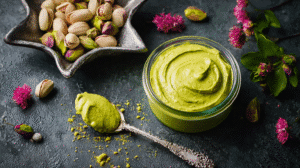
-
Full control over ingredients
-
Customizable texture and sweetness
-
No preservatives or additives
Store‑Bought Pros:
-
Convenient and time‑saving
-
Often smoother thanks to industrial grinders
-
Longer shelf life
What you go with depends on your goals: casual baking or smoothies? Store-bought works great. Chasing luxurious tarts or homemade gelato? DIY might just steal the show.
Part 6: FAQs
Estimated Word Count: 200 words
### What is the difference between pistachio paste, butter, and cream?
Pistachio paste is typically made with 100% ground pistachios—nothing else. It’s thick, slightly gritty, and super concentrated. Pistachio butter usually includes added oils or sweeteners, making it smoother and more spreadable—kinda like peanut butter. Meanwhile, pistachio cream is a sweet dessert spread (often with white chocolate or sugar), more like Nutella’s green cousin.
### How long does homemade pistachio paste keep?
If stored properly in an airtight jar in the refrigerator, homemade paste lasts around 2 weeks. Freeze in small portions for up to 3 months.
### Can I make pistachio paste without blanching?
Technically, yes—but expect darker color and a slightly bitter flavor. Blanching removes skins, enhances color, and smooths the texture.
### Why is my pistachio paste splitting or grainy?
That usually means it wasn’t blended long enough, or the nuts aren’t fresh. Try blending longer or adding a bit of neutral oil to help emulsify. Also, ensure your food processor is powerful enough to release the oils.
### Is pistachio paste good for you?
Definitely—especially when unsweetened and made from pure pistachios. It’s full of healthy fats, antioxidants, fiber, and plant-based protein. Just enjoy in moderation—it’s calorie-rich!
Part 7: Conclusion & Further Inspiration
Estimated Word Count: 100 words
So, what’s not to love about pistachio paste? It’s flavorful, versatile, rich in nutrients, and easy to make or buy. From delicate macarons to hearty sauces, this little jar of green magic deserves a permanent spot in your pantry.
Whether you’re a baker chasing the perfect pistachio dessert, a home cook wanting to experiment with savory twists, or just someone curious about healthier nut-based alternatives—pistachio paste opens the door to endless creativity. Why not start small? Swirl it into your oatmeal, blend it into a sauce, or spread it over toast. Once you taste it, you’ll wonder how you ever lived without it.
